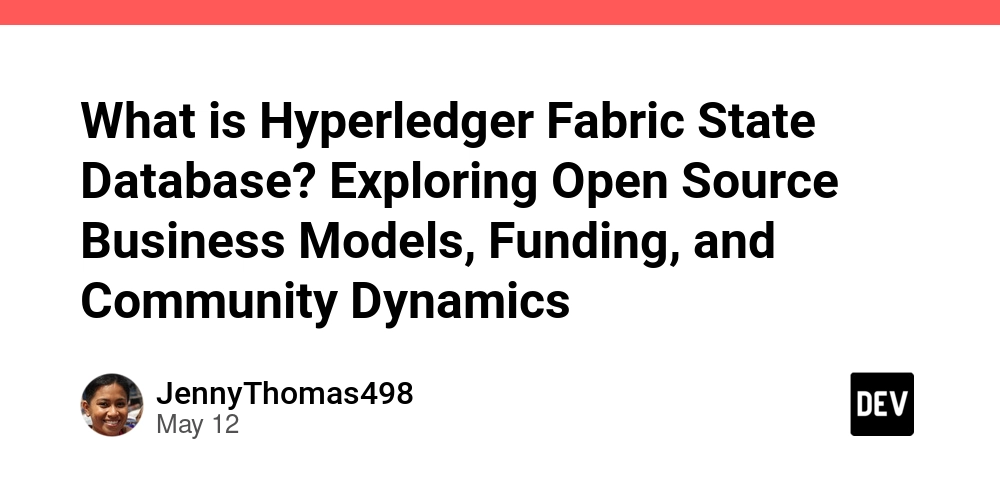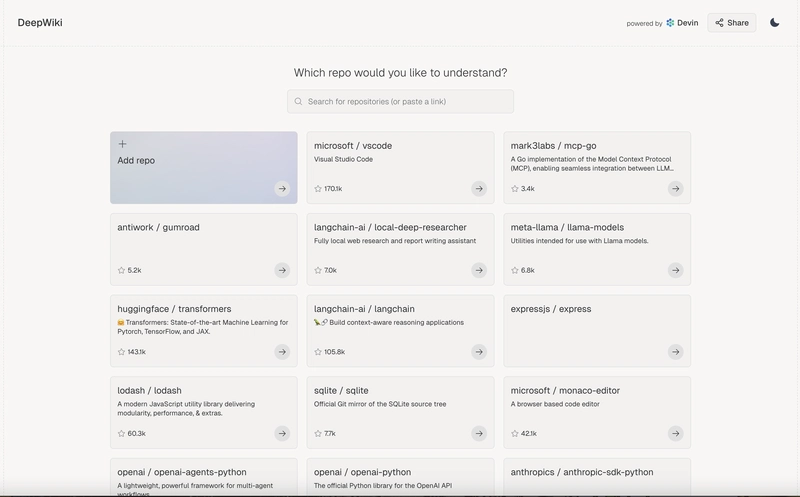What is Hyperledger Fabric State Database? Exploring Open Source Business Models, Funding, and Community Dynamics
Abstract This post explores the Hyperledger Fabric State Database, an essential component of the Hyperledger Fabric blockchain framework that upholds data integrity by integrating CouchDB. We dive into its technical architecture, open source business model under the Apache 2.0 license, diverse funding strategies—from corporate sponsorship and community-backed grants to decentralized funding via tokenization—and the vibrant developer community behind it. In addition, we discuss its applications in blockchain solutions, compare it with emerging NFT funding models, and highlight challenges and future innovations in the ecosystem. Introduction In today’s fast-paced digital world, secure data management and transparent funding models drive innovation in blockchain technology. The Hyperledger Fabric State Database is a cornerstone for modern distributed ledger systems. By serving as the persistent storage layer with robust query support via CouchDB, it helps maintain the integrity and state of blockchain networks. This blog post provides an in-depth look at the technology behind the Hyperledger Fabric StateDB, its open source ethos under the Apache 2.0 License, and its innovative funding and community strategies. Readers—from seasoned blockchain developers to new tech enthusiasts—will gain insights into how open source business models not only accelerate technology adoption but also shape diverse funding streams, similar to recent trends observed in NFT projects. Background and Context History and Evolution Hyperledger Fabric, hosted on the Linux Foundation, began as an enterprise blockchain project to offer a modular, flexible, and secure framework. A critical part of its design is the state database (StateDB), which keeps track of ledger state and supports complex queries for decentralized applications. This component leverages CouchDB for its ACID-compliant transactions and multi-document support, ensuring that each transaction across distributed networks remains consistent. Definitions and Ecosystem Blockchain Database: A decentralized system that securely stores transaction data. State Database (StateDB): A persistent storage layer that records the state of the ledger; for Fabric, often using CouchDB. Open Source Business Model: A model that democratizes innovation and collaboration by sharing the source code under a permissive license such as Apache 2.0. Funding Strategies: Methods used to support continuous development, including corporate sponsorship, community grants, crowdfunding, and tokenized funding. The Hyperledger Fabric StateDB resides at the intersection of advanced blockchain technology and an inclusive business model that fuels open source development. Projects like these have paved the way for similar funding practices in other tech arenas, including the NFT space. For instance, communities behind NFT collections such as the Wax Street Fighter NFT Collection illustrate how community-driven funding and transparency can drive innovation. Core Concepts and Features Technical Overview of Hyperledger Fabric StateDB At its technical core, the Hyperledger Fabric StateDB functions as the central repository where the current state of the distributed ledger is stored. Key features include: CouchDB Integration: Advanced Querying: Enables complex queries within the blockchain. ACID Transactions: Ensures data consistency across multiple updates. Modular Architecture: StateDB is designed to work seamlessly within the larger Fabric ecosystem, supporting chaincode (smart contracts) that require frequent state updates. Data Security & Transparency: The system maintains data immutability with strong security protocols, ensuring integrity and auditability. For more technical insights, refer to the official Hyperledger Fabric documentation. Open Source Business Model and Apache 2.0 Licensing Benefits The adoption of an open source business model is a game changer. The Apache 2.0 license not only encourages collaboration but also enables commercial integration without heavy restrictions. Key benefits include: Permissive Licensing: Commercial Adoption: Companies can integrate the technology without heavy licensing fees. Community Contributions: Developers worldwide can enhance components like the state database. Transparency and Security: The open license fosters trust among developers, sponsors, and users alike. Economic and Collaborative Growth: Enterprise adoption through corporate sponsorship and public grants forms the backbone of sustainable funding. Funding Strategies for Hyperledger Fabric StateDB Hyperledger Fabric StateDB thrives on diverse funding channels. Funding strategies include: Corporate and Institutional Sponsorships: Companies with vested interests in secure, scalable blockchain systems contribute through research c

Abstract
This post explores the Hyperledger Fabric State Database, an essential component of the Hyperledger Fabric blockchain framework that upholds data integrity by integrating CouchDB. We dive into its technical architecture, open source business model under the Apache 2.0 license, diverse funding strategies—from corporate sponsorship and community-backed grants to decentralized funding via tokenization—and the vibrant developer community behind it. In addition, we discuss its applications in blockchain solutions, compare it with emerging NFT funding models, and highlight challenges and future innovations in the ecosystem.
Introduction
In today’s fast-paced digital world, secure data management and transparent funding models drive innovation in blockchain technology. The Hyperledger Fabric State Database is a cornerstone for modern distributed ledger systems. By serving as the persistent storage layer with robust query support via CouchDB, it helps maintain the integrity and state of blockchain networks. This blog post provides an in-depth look at the technology behind the Hyperledger Fabric StateDB, its open source ethos under the Apache 2.0 License, and its innovative funding and community strategies. Readers—from seasoned blockchain developers to new tech enthusiasts—will gain insights into how open source business models not only accelerate technology adoption but also shape diverse funding streams, similar to recent trends observed in NFT projects.
Background and Context
History and Evolution
Hyperledger Fabric, hosted on the Linux Foundation, began as an enterprise blockchain project to offer a modular, flexible, and secure framework. A critical part of its design is the state database (StateDB), which keeps track of ledger state and supports complex queries for decentralized applications. This component leverages CouchDB for its ACID-compliant transactions and multi-document support, ensuring that each transaction across distributed networks remains consistent.
Definitions and Ecosystem
- Blockchain Database: A decentralized system that securely stores transaction data.
- State Database (StateDB): A persistent storage layer that records the state of the ledger; for Fabric, often using CouchDB.
- Open Source Business Model: A model that democratizes innovation and collaboration by sharing the source code under a permissive license such as Apache 2.0.
- Funding Strategies: Methods used to support continuous development, including corporate sponsorship, community grants, crowdfunding, and tokenized funding.
The Hyperledger Fabric StateDB resides at the intersection of advanced blockchain technology and an inclusive business model that fuels open source development. Projects like these have paved the way for similar funding practices in other tech arenas, including the NFT space. For instance, communities behind NFT collections such as the Wax Street Fighter NFT Collection illustrate how community-driven funding and transparency can drive innovation.
Core Concepts and Features
Technical Overview of Hyperledger Fabric StateDB
At its technical core, the Hyperledger Fabric StateDB functions as the central repository where the current state of the distributed ledger is stored. Key features include:
-
CouchDB Integration:
- Advanced Querying: Enables complex queries within the blockchain.
- ACID Transactions: Ensures data consistency across multiple updates.
-
Modular Architecture:
- StateDB is designed to work seamlessly within the larger Fabric ecosystem, supporting chaincode (smart contracts) that require frequent state updates.
-
Data Security & Transparency:
- The system maintains data immutability with strong security protocols, ensuring integrity and auditability.
For more technical insights, refer to the official Hyperledger Fabric documentation.
Open Source Business Model and Apache 2.0 Licensing Benefits
The adoption of an open source business model is a game changer. The Apache 2.0 license not only encourages collaboration but also enables commercial integration without heavy restrictions. Key benefits include:
-
Permissive Licensing:
- Commercial Adoption: Companies can integrate the technology without heavy licensing fees.
- Community Contributions: Developers worldwide can enhance components like the state database.
-
Transparency and Security:
- The open license fosters trust among developers, sponsors, and users alike.
-
Economic and Collaborative Growth:
- Enterprise adoption through corporate sponsorship and public grants forms the backbone of sustainable funding.
Funding Strategies for Hyperledger Fabric StateDB
Hyperledger Fabric StateDB thrives on diverse funding channels. Funding strategies include:
- Corporate and Institutional Sponsorships: Companies with vested interests in secure, scalable blockchain systems contribute through research collaborations and direct support.
- Community-Driven Funding: Developers and blockchain enthusiasts fund projects via crowdfunding platforms, decentralized finance (DeFi) initiatives, and blockchain-based grants.
- Hybrid and Tokenized Funding: Innovative funding models such as Initial Coin Offerings (ICOs), Security Token Offerings (STOs), and decentralized autonomous organizations (DAOs) also play a part.
Below is a summary table showcasing the diversified funding sources:
| Funding Source | Description | Examples/Benefits |
|---|---|---|
| Corporate Sponsorship | Large enterprises contribute funds and expertise | Technology giants, financial institutions |
| Community Grants | Crowdfunding and community donations | Developer-driven contributions, blockchain-based grants |
| Hybrid Models (ICOs/STOs/DAOs) | Decentralized token-based funding | Broader investor engagement, incentivized contributions |
Applications and Use Cases
Enterprise Blockchain Solutions
Hyperledger Fabric’s modular design, powered by its reliable state database, makes it ideal for enterprise applications such as:
- Supply Chain Management: Track and trace products through a decentralized ledger ensuring transparency from production to consumption.
- Digital Identity Management: Securely manage user identities and provide verified, immutable credentials.
- Financial Services: Support secure transactions, regulatory compliance, and auditability in financial institutions.
Comparative Use Case: NFT Ecosystems
Interestingly, some NFT collections have adopted similar funding and community collaboration models. For instance:
NFT Funding Models:
Collections like the Wax William Shatner NFT Collection employ decentralized funding and community governance approaches that mirror the open source model in blockchain projects.Benefits Shared:
Transparency in funding, community collaboration, and the ability to scale rapidly are common factors between state-of-the-art blockchain databases and emerging NFT platforms.
Practical Implementation
Organizations leveraging Hyperledger Fabric StateDB benefit from:
- Robust Data Security: Ensures transaction consistency and immutability.
- Scalability: Designed for performance even as transaction volumes grow.
- Customizability: Developers can tailor solutions according to organizational requirements.
Challenges and Limitations
While the benefits are abundant, several technical and adoption challenges persist:
-
Complex Integration:
- Integrating with existing enterprise systems can be challenging due to differences in infrastructure.
-
Scalability Issues:
- Although designed for high throughput, rapid scaling without proper optimization may require additional tuning.
-
Community-Driven Sustainability:
- Reliance on a community for funding and contributions means that project continuity hinges on active developer engagement.
-
Regulatory Concerns:
- Navigating regulatory landscapes may pose risks for organizations using blockchain for sensitive data.
A bullet list summarizing common challenges:
- Integration Complexity
- Scalability and Performance Tuning
- Sustaining Community Engagement
- Regulatory and Compliance Issues
Addressing these challenges often involves hybrid funding models and improved developer outreach, a strategy also discussed in posts like Navigating the Landscape of Fair Code Licenses.
Future Outlook and Innovations
Emerging Trends in Blockchain Databases
The future of blockchain databases, including Hyperledger Fabric StateDB, is closely tied to advancements in scalability, interoperability, and enhanced security. Key trends include:
-
Improved Consensus Mechanisms:
- New protocols boosting transaction finality and reducing latency.
-
Decentralized Funding Adoption:
- Greater reliance on tokenized and DAO-based funding models that democratize investment.
-
Integration with Artificial Intelligence and IoT:
- Facilitating real-time data processing and secure, automated decision-making.
Innovations in Open Source Funding and Licensing
Looking ahead, the interplay between open source licenses and funding methods will continue to drive innovation:
-
Tokenized Licensing Models:
- Similar to NFT tokenization seen in Wax Blockchain Punks NFT Collection, this model can incentivize contributors and users alike.
-
Enhanced Corporate Collaboration:
- Traditional funding channels may see increased digital transformation strategies where corporations actively engage with community developers.
These developments are echoed by thought leaders in the space, as seen in articles such as Innovative Funding Through Tokenized Licenses for Open Source Projects and Revolutionizing Software Licensing: The Shift to Decentralized Management.
Consolidating Technical and Business Innovations
The successes of Hyperledger Fabric StateDB highlight how technical excellence paired with strategic funding can create resilient ecosystems. Potential future improvements include:
-
Seamless Integration Tools:
- Enhanced APIs and middleware to bridge legacy systems with blockchain networks.
-
Robust Monitoring and Optimization Platforms:
- Tools that provide real-time insights into transaction performance and detect anomalies.
-
Enhanced Developer Incentives:
- More structured compensation models and sponsorship programs to attract top talent.
These innovations will not only bolster blockchain database performance but also serve as blueprints for similar projects that blend technology with digital funding. For additional context, explore resources like Arbitrum and Community Governance which emphasize decentralized control and transparency.
Summary
To summarize, the Hyperledger Fabric State Database is pivotal in sustaining the data integrity and performance of blockchain networks. By utilizing CouchDB for advanced query capabilities and ACID transactions, it ensures the state of the ledger remains secure and consistent. Under the umbrella of the Apache 2.0 license, Hyperledger Fabric leverages an open source business model that encourages community collaboration, corporate sponsorship, and innovative funding approaches.
We explored various funding strategies—from traditional corporate contributions and community grants to hybrid models that integrate decentralized token systems. We also saw how these funding streams mirror emerging trends in the NFT space, where projects like the Wax Street Fighter NFT Collection and Wax William Shatner NFT Collection leverage similar philosophies.
Furthermore, our discussion highlighted challenges such as integration complexity, scalability, sustaining community engagement, and navigating regulatory landscapes. The future outlook for Hyperledger Fabric StateDB appears bright, with anticipated advancements in consensus mechanisms, decentralized funding methods, and enhanced interoperability with emerging technologies like AI and IoT.
As open source projects continue evolving through robust community and corporate engagement, the lessons learned from Hyperledger Fabric’s open source funding and business models can serve as a blueprint for sustainable innovation. For further reading on blockchain architecture and open source funding, check out the official documentation and industry discussions on platforms like Dev.to.
Concluding Thoughts
In conclusion, Hyperledger Fabric StateDB not only reinforces the technical backbone of enterprise blockchain solutions but also exemplifies how decentralized funding and open source collaboration can drive technology forward. Its blend of robust technical design and innovative financial models offers vital insights for developers, investors, and businesses looking to harness blockchain technology.
By understanding and implementing these open source principles and funding strategies, organizations can ensure that their technological infrastructures remain scalable, secure, and continuously evolving—all vital in today’s dynamic digital landscape.
Key Takeaways:
- Robust Technical Architecture: The integration of CouchDB ensures reliable, fast, and secure state management.
- Open Source Licensing: Using the Apache 2.0 license promotes innovation and ease of commercial integration.
- Diverse Funding Models: Funding streams range from corporate sponsorships to decentralized token models akin to innovative NFT projects.
- Future Innovations: Expect breakthroughs in consensus mechanisms, integration tools, and enhanced developer incentives.
By embracing such holistic approaches in both technical development and open source business practices, the future of blockchain databases—and the broader ecosystem—remains promising and transformative.
This comprehensive look at Hyperledger Fabric StateDB not only revisits its technical merits but also contextualizes it within today’s evolving open source and funding landscapes. Embracing sustainable practices and decentralized funding models will continue to shape the future of secure, scalable, and community-driven blockchain technologies.














































































































































































![[The AI Show Episode 156]: AI Answers - Data Privacy, AI Roadmaps, Regulated Industries, Selling AI to the C-Suite & Change Management](https://www.marketingaiinstitute.com/hubfs/ep%20156%20cover.png)
![[The AI Show Episode 155]: The New Jobs AI Will Create, Amazon CEO: AI Will Cut Jobs, Your Brain on ChatGPT, Possible OpenAI-Microsoft Breakup & Veo 3 IP Issues](https://www.marketingaiinstitute.com/hubfs/ep%20155%20cover.png)












































































































































































































































.jpg?width=1920&height=1920&fit=bounds&quality=70&format=jpg&auto=webp#)

























_Michael_Burrell_Alamy.jpg?width=1280&auto=webp&quality=80&disable=upscale#)

























































































































































































